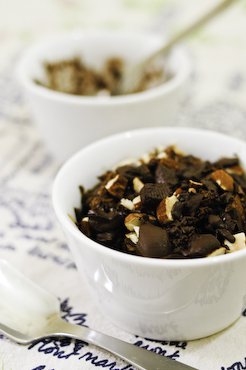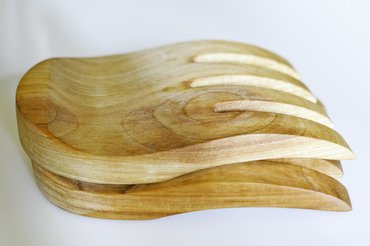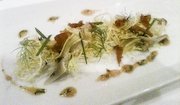
If you’ve ever bought or baked fresh brioche, surely you’ve noted the subtle shift, occurring sometime during day two or three, when said brioche turns from something you can’t keep your hands off of, to something you feel you should be eating because it’s there.
When that initial magic is gone, the toaster can help revive it to a certain extent, especially if you top it with thin slivers of salted butter and generous amounts of grated chocolate straight out of the toaster. But my favorite thing to do is to give an entirely new life to the brioche, either by cooking a simple pain perdu (“lost bread,” the actual French toast) in the skillet, or by baking it into a bettelman.
Bettelman is the Alsatian word for bread pudding: it means “beggar” in the Alsatian dialect, and I like the reminder that it is, at heart, a thrifty dish, meant to use up scraps of bread. I first learned about it from Christophe Vasseur, who runs the now deliriously popular Parisian bakery Du Pain et des Idées and bakes a wonderful apple bettelman drawn from his childhood memories, for which he kindly shared the recipe for my book Clotilde’s Edible Adventures in Paris.
The bettelman I’m presenting here is a different — and slightly more indulgent — version with chocolate and almonds, and it is an equally easy and enthusing way to upcycle your brioche: cubed and soaked in an egg and milk batter made chocolate-y by the addition of cocoa powder, it is then layered with chocolate chunks and chopped almonds, and baked until custardy in the middle and crusty-crisp at the top.
If it’s not brioche you have on hand, but challah or croissants or any other kind of bread enriched with milk and/or eggs, feel free to substitute that. The recipe can also be made with stale bread of any kind, though the texture will be less pillowy then. And if you have less than 200 grams or 7 ounces of brioche leftover, feel free to cube it and keep it in the freezer until you have enough to make the recipe.



 ~ Bumble bee dessert dumplings at
~ Bumble bee dessert dumplings at  ~ A salad of shaved fennel, frisée, and slim artichoke wedges, topped with fresh herbs and crispy prosciutto.
~ A salad of shaved fennel, frisée, and slim artichoke wedges, topped with fresh herbs and crispy prosciutto. ~ Kale, kale, and more kale. Kale is an elusive ingredient in France: it is grown essentially as an ornamental plant (
~ Kale, kale, and more kale. Kale is an elusive ingredient in France: it is grown essentially as an ornamental plant (

